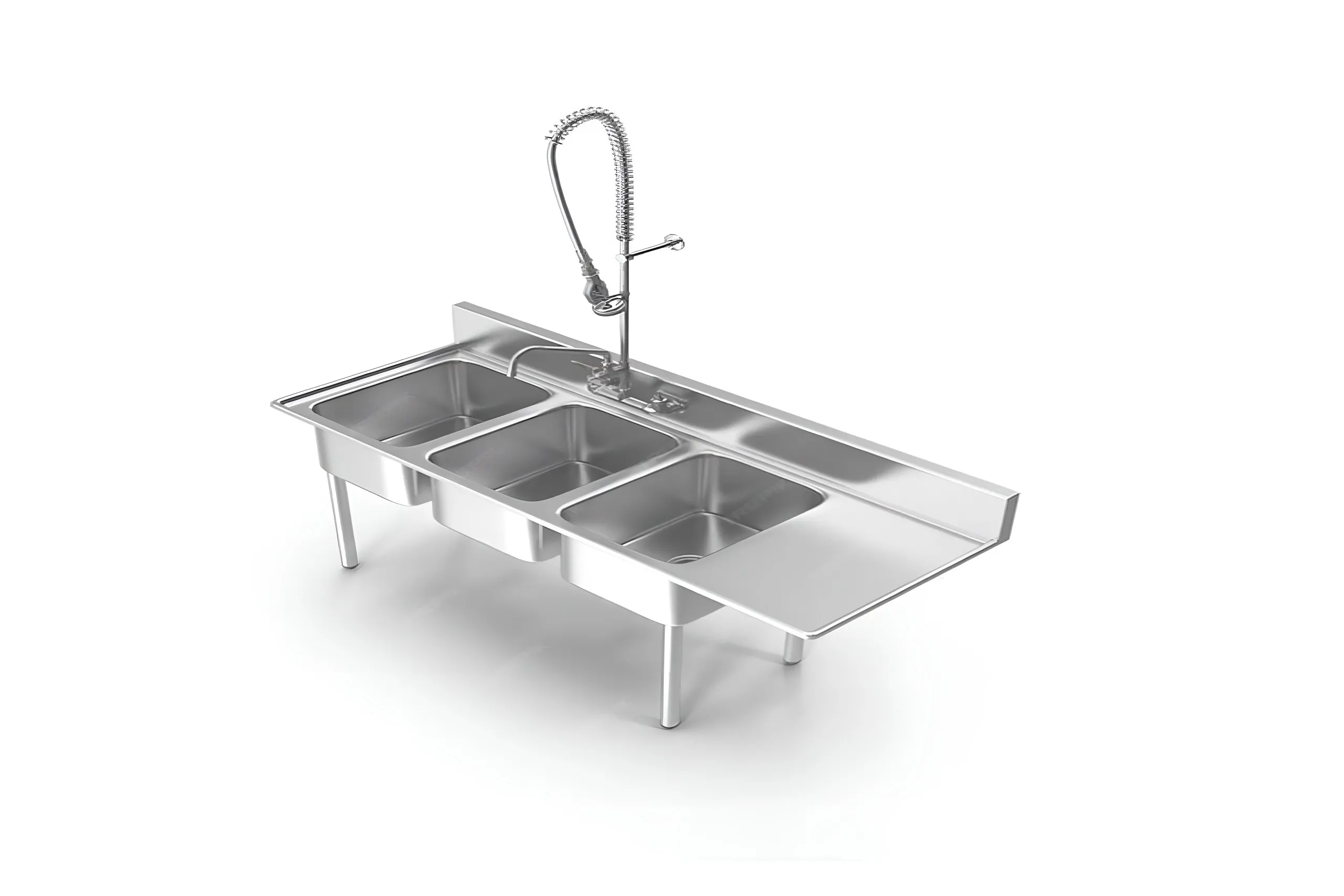
A three-sink unit is part of an efficient restaurant kitchen because it consists of washing, rinsing, and sanitizing the equipment. The time-saving aspect ensures that cross-contamination risks are minimized, so every food service business should make this investment. When paired with a refrigerated display counter, your kitchen is likely to serve better, as ingredients stay fresh and are easier to use.
With these tools, an efficient workflow is built to maintain employees’ focus on presenting outstanding dishes without neglecting sanitation and safety. A well-organized kitchen with these tools is the answer to meeting regulations and providing a greater dining experience for customers.
Whether it is a three-sink unit in an existing or new kitchen, comprehension of combining this with a refrigerated display counter gives the right difference between a successful and hygienic workspace for restaurant kitchens. Learn more on why installing a three-sink unit can prove to be a game-changer for your restaurant’s kitchen.
Hygiene is kept at its best with a three-sink unit in a commercial kitchen, ensuring cleanliness and health standards are met. This setup has three distinct sections with different sinks for different purposes: wash, rinse, and sanitize. It thus simplifies the cleaning process, reduces instances of cross-contamination, and maintains a smooth kitchen workflow. Here is a closer look at the functions of each compartment:
| Compartment | Purpose |
|---|---|
| First | Washing dishes with warm water and soap to remove debris. |
| Second | Rinsing off soap residue with clean, warm water. |
| Final | Sanitizing dishes to eliminate bacteria and ensure safety. |
This methodical process ensures that the utensils are completely cleaned and disinfected before being reused again. Coupled with a three-sink unit, this refrigerated display counter enhances kitchen efficiency; ingredients remain fresh and organized, while utensils are sanitized for use. By optimizing cleanliness and following safety standards, the three-sink unit streamlines operations and allows your kitchen to be legally compliant, thereby enabling an efficient and hygienic workflow.
A three-sink unit is a must-have for every commercial kitchen. It lends a systematic approach to washing the dishes, making sure it meets the requirements of efficiency, hygiene, and health by providing a structured way for the washing process. Here’s what makes it very much needed in every restaurant kitchen.
The three-sink unit has a compartmentalized design that separates each step of the cleaning process. This prevents dirty dishes from coming into contact with clean and sanitized ones, thereby excluding cross-contamination and maintaining food safety standards.
With separate sinks for washing, rinsing, and sanitizing, the cleaning process becomes much more organized and effective. The systematic workflow allows your employees to wash dishes faster and ensures every utensil passes the hygiene test, which is critical in high-volume kitchens.
Regulatory bodies place stringent hygiene code requirements on food service operations. A three-sink unit simplifies compliance with being by health code requirements and ensures your restaurant passes through inspections without a hitch.
The three-sink unit has a definite structure and streamlines the operations so that the staff can concentrate on other kitchen tasks. This results in an effective kitchen workflow and quality service.
The unit encourages regular sanitization, thus minimizing the chance of foodborne diseases and probable losses due to health violations. Its solid structure allows it to be used for the longer term.
Incorporating a three-sink unit within the kitchen not only makes it clean but also safe and efficient. Hence, it becomes vital for every restaurant setup.
Proper use of a three-sink unit would help any commercial kitchen maintain efficiency and hygiene levels at its best. However, common mistakes can compromise the effectiveness of this high-quality kitchen product. Here’s a guide on identifying and avoiding those pitfalls:
Using sinks out of order may lead to cross-contamination and improper cleaning. Hence, you must follow the right order:
Dirty water carries bacteria and reduces effectiveness for multiple batches. That’s why you should change the water in each tank after washing a big batch or when the water becomes dirty.
Large food particles remain on the dishes, resulting in clogged sinks and contaminated water. So, without any hesitation, you must remove excess food scraps before washing. Also, it is maintain the sink to avoid any future clogging.
A three-compartment sink unit installation in the kitchen of your restaurant is a smart investment that boosts hygiene, efficiency, and compliance with health standards. It has a strict, compartmentalized structure in cleaning. Thus, it avoids cross-contamination and provides easy working procedures. It can be synergized with a refrigerated display counter to enhance productivity while keeping the ingredients fresh.
A three-sink unit from an eminent equipment manufacturer, like Riddhi Display, can serve as a foundation for an efficient and organized kitchen by prioritizing proper use and regular maintenance. Implementing this necessary equipment can enhance your restaurant’s workflow and food safety standards, making the environment cleaner and more productive for your team and customers.
Copyright by Riddhi Display. All rights reserved.
Powered by: Icecube Digital